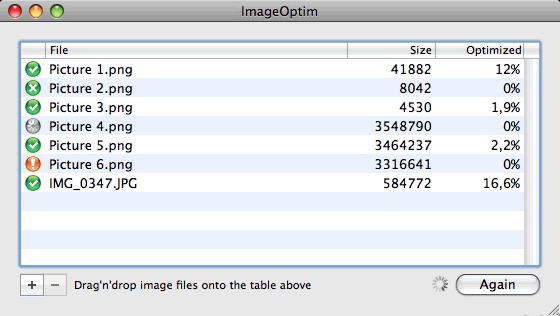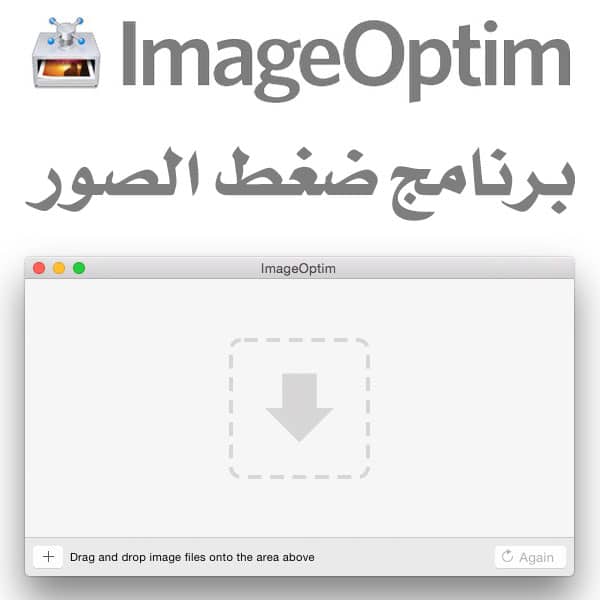

The compression process removes visual details of the image, but the compression ratio can be 10x larger than GIF or PNG.

For still images, PNG achieves better compression ratio with better visual quality. GIF and PNG are lossless formats, in that the compression process does not make any visual modification to the images. If that happens, please use your originals. If you use third party tools, please be aware that the transformation might make your images larger, if yours were already very well optimized. You can also use tools such as the convert binary made by ImageMagick which can apply similar optimizations - see example instructions below.
DOWNLOAD IMAGEOPTIM DOWNLOAD
For your convenience, you can download the optimized images directly from PageSpeed Insights (which is using image optimization library from ). Because of their popularity, PageSpeed Insights provides specific optimization recommendations. GIF, PNG, and JPEG formats make 96% of the entire Internet’s image traffic. Optimizations for GIF, PNG, and JPEG images Follow the image optimization checklist for individual images.Follow the best practices for serving responsive images.
DOWNLOAD IMAGEOPTIM HOW TO
In addition, you need to consider whether some images are best served in a vector format, if the desired effects can be achieved via CSS, and how to deliver appropriately scaled assets for each type of device. Recommendationsįinding the optimal format and optimization strategy for your image assets requires careful analysis across many dimensions: type of data being encoded, image format capabilities, quality settings, resolution, and more. As a result, optimizing images can often yield some of the largest byte savings and performance improvements: the fewer bytes the browser has to download, the less competition there is for the client's bandwidth and the faster the browser can download and render content on the screen. Images often account for most of the downloaded bytes on a page. This rule triggers when PageSpeed Insights detects that the images on the page can be optimized to reduce their filesize without significantly impacting their visual quality. Version 5 is the latest and providesīoth real-world data from the Chrome User Experience Report and lab data from Lighthouse. This page was written for version 4 of the PageSpeed Insights API, which isĭeprecated and will be shut down in May 2019.


 0 kommentar(er)
0 kommentar(er)
